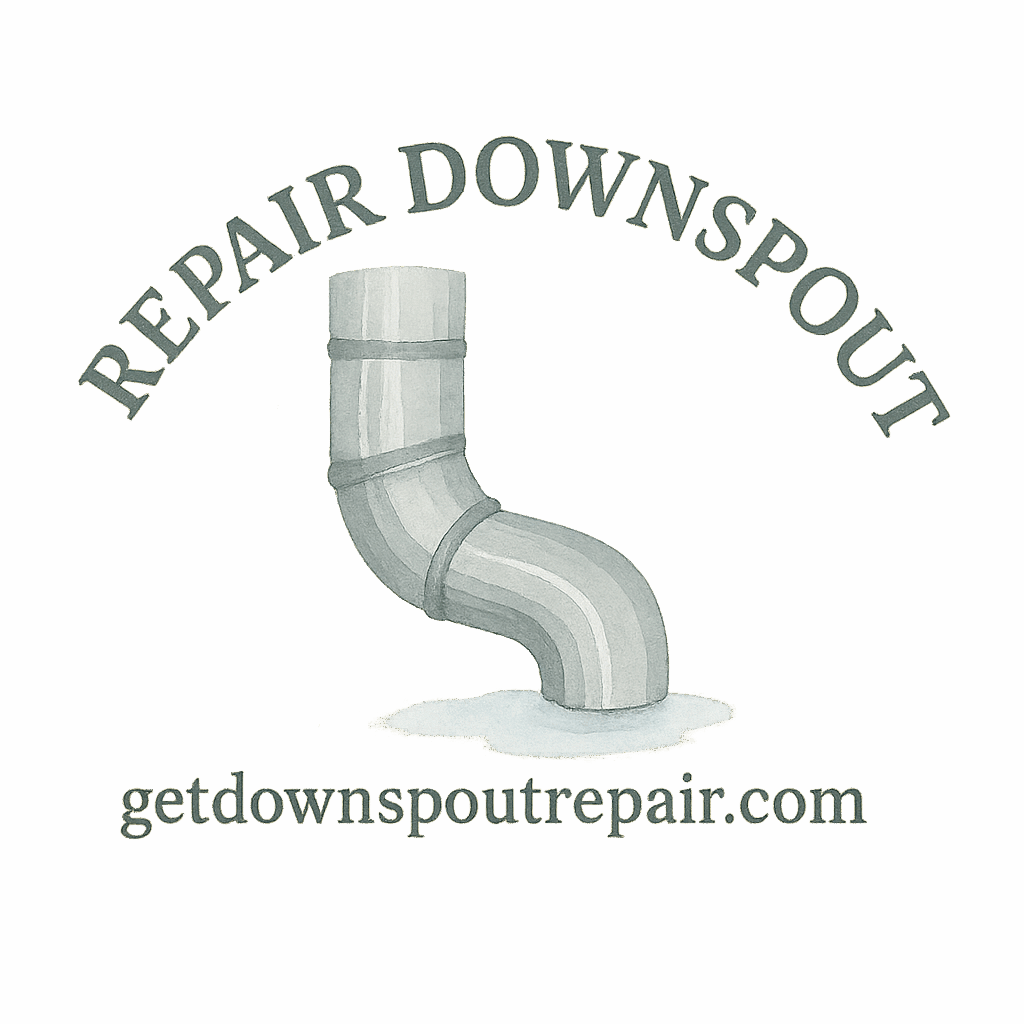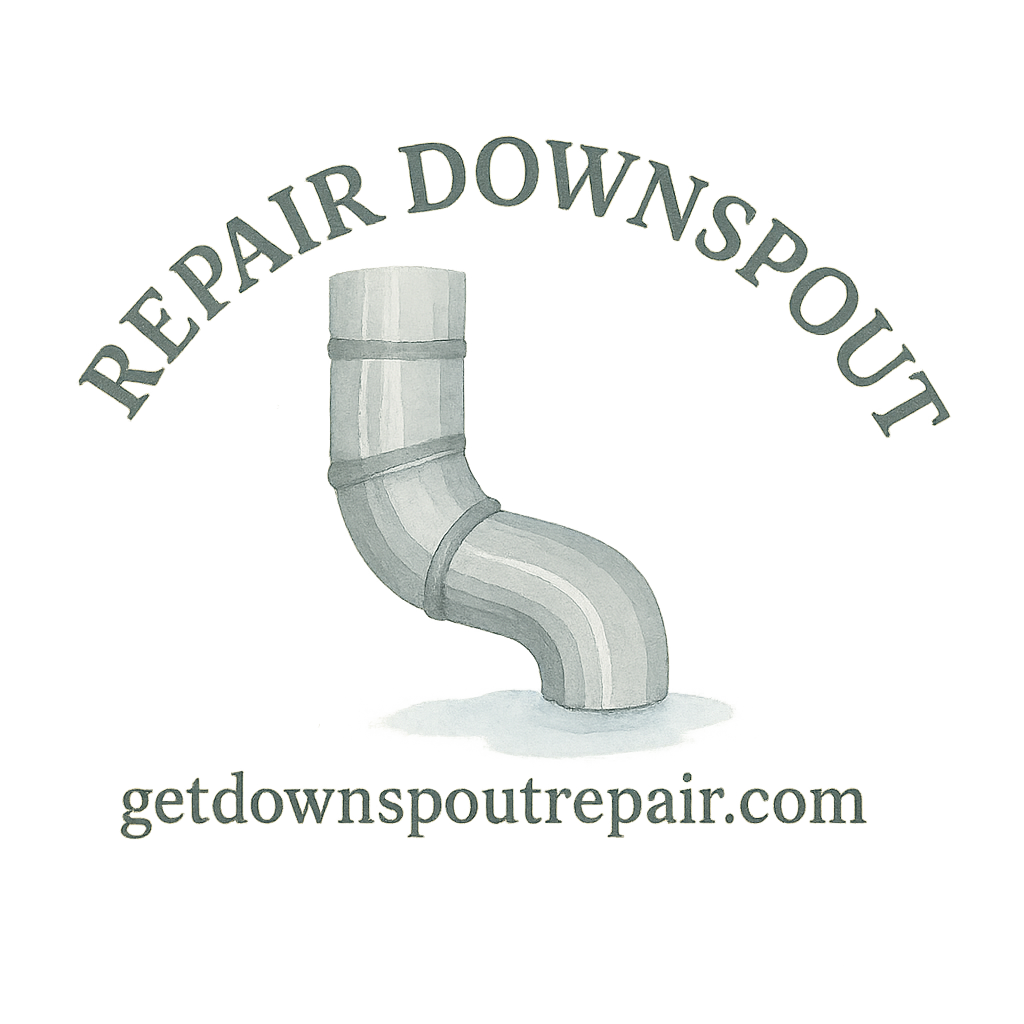If your gutters are sagging, pulling away, or constantly clogging, chances are your downspouts aren’t doing their job. The good news? You don’t always need a professional to fix it. With a few DIY downspout repair tricks, you can bring your drainage system back to life, save money, and protect your home from costly water damage.
In this guide, we’ll walk through six practical DIY downspout repair methods to fix sagging gutters, plus maintenance tips to prevent future problems. Let’s dive in.
Why Downspouts and Gutters Matter
Your home’s gutter and downspout system might not be glamorous, but it’s absolutely essential.
The Role of Downspouts in Drainage
Downspouts direct rainwater away from your foundation. Without them working properly, water can pool around your home, leading to erosion, basement leaks, and even structural damage.
You can explore more about the basics of this system in repair basics.
Common Problems with Sagging Gutters
Sagging gutters often cause:
- Water overflow during storms
- Pooled water near the foundation
- Strain on brackets and fasteners
- Potential roof leaks
Unchecked sagging often leads to issues like those explained in downspout neglect.
Signs You Need DIY Downspout Repair
Before you grab your ladder, make sure your gutters actually need attention.
Visible Sagging or Pulling Away
If the gutter troughs look uneven or are separating from the fascia, it’s a clear red flag.
Overflowing Water During Rain
Notice waterfalls instead of controlled drainage during heavy rain? That’s a sign of a clog or misaligned downspout.
Cracks, Rust, and Leaks
Leaks along seams or rusted brackets indicate that your gutters are struggling to handle water flow.
Tools and Materials You’ll Need
You don’t need a contractor’s toolbox to handle DIY downspout repair.
Essential DIY Tools
- Screwdriver or drill
- Gutter sealant
- Measuring tape
- Hacksaw (for trimming downspout pieces)
For a deeper dive into tool choices, check out DIY tools.
Budget-Friendly Options
If you’re tight on budget, budget tips suggest opting for universal brackets and affordable sealant brands that still get the job done.
Safety Gear Checklist
Don’t overlook this! Gloves, goggles, and a sturdy ladder are must-haves.
Trick #1: Tightening Loose Brackets
One of the easiest ways to tackle sagging gutters is by reinforcing their support.
Identifying Weak Points
Walk around your home and spot any brackets pulling away from the fascia board.
Replacing Rusted Screws
Swap out rusted screws with galvanized ones to prevent future corrosion.
If you’re new to repairs, start small with a beginner repair like this before tackling bigger fixes.
Trick #2: Realigning the Downspout
Improper alignment can make gutters sag and overflow.
Adjusting the Pitch for Proper Flow
Gutters should slope about 1/4 inch for every 10 feet. Too flat or too steep, and water won’t drain correctly.
Preventing Future Misalignment
Check brackets every few months. This small step can save you from larger downspout problems.
Trick #3: Sealing Leaks and Cracks
Even tiny cracks can snowball into serious leaks.
Using Sealant or Caulk
Apply gutter sealant on the inside seams, especially where two sections meet.
Temporary vs. Permanent Fixes
Quick patch jobs may hold for a season, but permanent sealing extends your gutter’s lifespan and prevents costly water damage.

Trick #4: Clearing Clogs from Sagging Gutters
Clogs add weight, which causes gutters to sag.
Signs of a Clogged Downspout
If water backs up or you see debris sticking out, you’ve got a blockage.
Best Ways to Unclog Without Damage
- Flush with a garden hose
- Use a plumber’s snake for stubborn clogs
- Install screens to prevent clogging
More methods are covered in our DIY fixes guide.
Trick #5: Reinforcing with Hangers
Sometimes, sagging happens simply because your gutters need extra support.
Types of Gutter Hangers
- Hidden hangers
- Spike-and-ferrule systems
- Strap hangers
Learn which hanger works best in the repair guide.
Step-by-Step Reinforcement Process
- Space hangers every 2 feet.
- Drill into solid fascia, not soft wood.
- Check alignment after securing each hanger.
Trick #6: Extending Downspout Drainage
A short downspout often leads to pooling, which stresses gutters.
Why Extensions Prevent Sagging
Directing water farther from your foundation reduces soil erosion and lessens gutter strain.
Affordable Extension Options
- Flexible plastic extensions
- Underground drain pipes
- Decorative splash blocks
Explore affordable solutions in drainage protection.
Preventing Future Sagging
A little upkeep goes a long way.
Seasonal Maintenance Tips
- Clean gutters every spring and fall
- Inspect after heavy storms
- Keep nearby trees trimmed
You can also explore gutter cleaning tips to keep the system debris-free.
Installing Guards and Screens
These prevent leaves and twigs from entering your system in the first place.
When DIY Downspout Repair Isn’t Enough
Sometimes the damage is too severe for a DIY fix.
Structural Issues Beyond DIY
Rotten fascia boards or collapsed gutter runs need professional intervention.
Calling in a Professional
When in doubt, consult a licensed contractor or a downspout expert. Find out more in our pro help section.
Cost Considerations
Money matters when it comes to repairs.
DIY vs. Professional Costs
DIY solutions usually cost under $100, while pro services may range from $300 to $1,000 depending on scope. See detailed breakdowns in costs & materials.
Long-Term Value of Maintenance
Regular DIY care can save thousands in avoided foundation and roofing repairs.
Conclusion
Sagging gutters may look like a headache, but with these 6 DIY downspout repair tricks, you can restore your drainage system and prevent costly water damage. From tightening brackets to extending downspout drainage, each step keeps your home safe and sound.
Remember, maintenance is cheaper than replacement, so stay consistent with seasonal care—and don’t hesitate to call a professional if the problem is beyond your reach.
For more resources, visit Get Downspout Repair and explore guides on repair now, fix downspout, and downspout save.
FAQs
1. How do I know if my sagging gutters need immediate repair?
If they’re pulling away from the fascia or overflowing even during light rain, fix them right away.
2. What’s the easiest DIY downspout repair trick for beginners?
Tightening loose brackets—it’s quick, inexpensive, and highly effective.
3. Can clogged downspouts really cause sagging?
Yes! Clogs add weight, which strains brackets and leads to sagging.
4. How often should I inspect my gutters and downspouts?
At least twice a year—spring and fall—but more often if you live near trees.
5. Is sealant a permanent fix for leaks?
It depends on the crack size. Small leaks can be sealed permanently; bigger ones may need replacement.
6. Should I hire a pro if I can’t realign my downspouts?
Yes, especially if your gutters are structurally damaged. Professionals have premium tools for lasting results.
7. How much does professional downspout repair cost compared to DIY?
DIY may cost under $100, while professional repair can run into hundreds—sometimes over $1,000 for major jobs.


